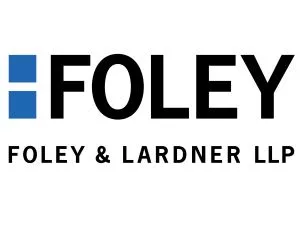- within Food, Drugs, Healthcare and Life Sciences topic(s)
- within Government, Public Sector, Coronavirus (COVID-19) and Insurance topic(s)
- with readers working within the Banking & Credit industries
In spring 2025, the Food and Drug Administration (FDA) resolved and ended the GLP-1 medications shortage, subsequently releasing declaratory orders that neither outsourcing compounding pharmacies or pharmacies could compound drugs that were essentially copies of either semaglutide (available under the brand names Ozempic, Rybelsus, and Wegovy) and tirzepatide (available under the brand names Mounjaro, and Zepbound). Read more about these declaratory orders and ongoing litigation surrounding compounding GLP-1 medications in our prior blog posts, "GLP-1 Drugs: FDA Removes Semaglutide from the Drug Shortage List" and "GLP-1 Drugs: FDA Sued Over Removing Tirzepatide from the Drug Shortage List."
In response, state regulators have released updated guidance directed at providers, pharmacies, and outsourcing pharmacies regarding the production and distribution of these compounded medications. For example, in June 2025, Connecticut Attorney General released a statement warning businesses of allegedly or potentially unfair and deceptive conduct related to compounding of GLP-1 medications.
Ohio Board of Pharmacy FAQs
On July 17, 2025, the Ohio Board of Pharmacy followed suit, publishing FAQs to resolve potential confusion regarding the production and distribution of GLP-1 medications. The FAQs discuss a reversion to status quo in that GLP-1s can no longer be compounded as essential copies. Although prescriber clinics or compounding pharmacies may continue to dispense or personally furnish compounded GLP-1s that were purchased prior to the end dates dictated by the FDA, compounding pharmacies and outsourcing pharmacies cannot dispense or distribute GLP-1s that were compounded prior to the end dates.
When GLP-1s may be Compounded
Consistent with the Food, Drug, and Cosmetic Act (FDCA) (21 U.S.C. § 353b), the FAQs state that compounding drugs, including GLP-1s, is appropriate either when the drug is not commercially available (including if there is an FDA-declared shortage) or "when the compounded drug includes a change, made for an identified individual patient, which produces for that patient a significant difference, as determined by the prescribing practitioner, between the compounded drug and the commercially available product." In short, compounding pharmacies will no longer be able to produce "copies" of commercially available drugs, including GLP-1s.
According to the FAQs (and consistent with the FDCA), pharmacies will now have to make and document identifiable changes related to a prescription for an individual patient in order to compound GLP-1 medications. Also consistent with the FDCA, prescribers are now required to specify a reason, documented on the prescription, that the compounded drug would produce a significant difference from the commercially available product in order to justify compounding. Notably, "a prescription that identifies only a patient's name and drug product formulation is not sufficient to establish that the prescriber made the determination that the formulation would produce a significant difference from the commercially available drug product." According to the guidance, appropriate justification and documentation might include the following:
- "No Dye X, patient allergy" (if the comparable drug contains the dye)
- "Liquid form, patient canʼt swallow tablet" (if the comparable drug is a tablet)
- "6 mg, patient needs higher dose" (if the comparable drug is only available in 5 mg dose).
Finally, the FAQs clarified that:
The FDA considers a compounded drug product to be essentially a copy of a commercially available drug product if the compounded drug product contains the same [active pharmaceutical ingredient] as two or more commercially available drug products in the same, similar, or easily substitutable strength and if the commercially available drug products can be used (regardless of how they are labeled) by the same route of administration prescribed for the compounded drug.
Thus, adding an additional commercially available drug, such as B12, is insufficient to justify compounding a GLP-1 medication.
How GLP-1s Must be Compounded
The FAQs conclude by offering guidance for compounding GLP-1s when permissible. The FAQs refer out to Chapter 4729:7-2 regarding Pharmacy Compounding, Chapter 4729:7-3 regarding Prescriber Compounding, and Chapter 4729:6-10 regarding Outsourcing Facilities for in depth requirements for compounding. Further, all GLP-1 products are required to meet the following three conditions:
- Comply with an applicable United States Pharmacopeia (USP) or National Formulary (NF) monograph if one exists;
- Are components of FDA-approved drug products if an applicable USP or NF monograph does not exist; or
- Appear on FDAʼs list of bulk drug substances that can be used in compounding (the 503A bulks list) if such a monograph does not exist and the substance is not a component of an FDA-approved drug product.
Finally, the FAQs state that when compounding any medications, including GLP-1s, the active pharmaceutical ingredient must be purchased from an Ohio licensed drug distributor.
Key Takeaways
The release of these FAQs along with guidance from other states signals increasing regulation (and presumably enforcement) of GLP-1 compounding. Providers and compounders will want to pay close attention to enforcement trends and ensure that their practices are in line with state and national compounding requirements.
The content of this article is intended to provide a general guide to the subject matter. Specialist advice should be sought about your specific circumstances.




